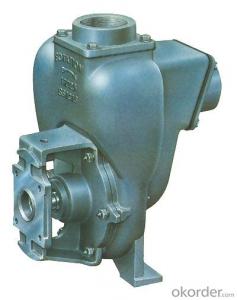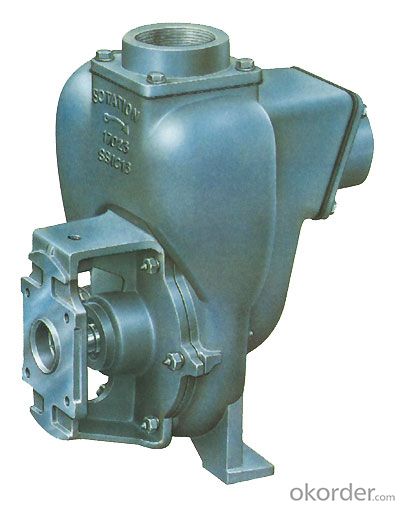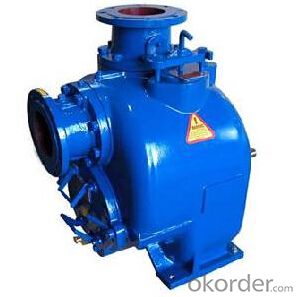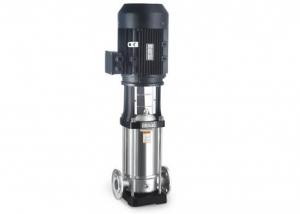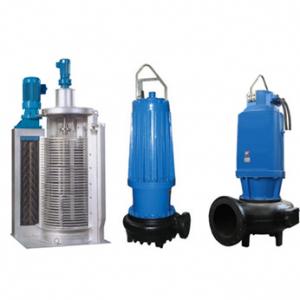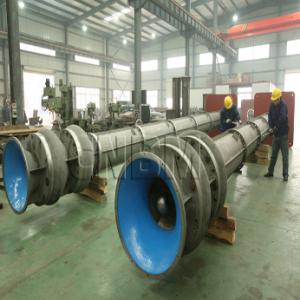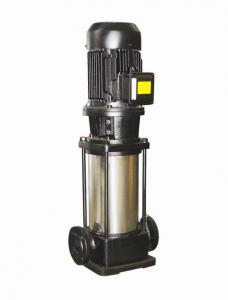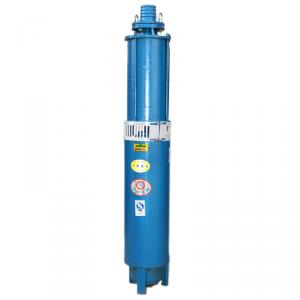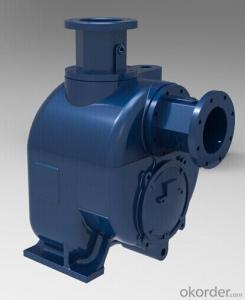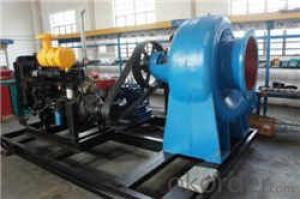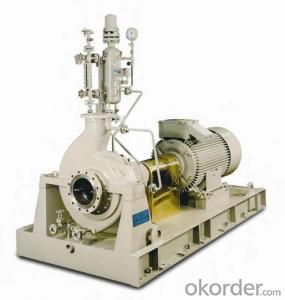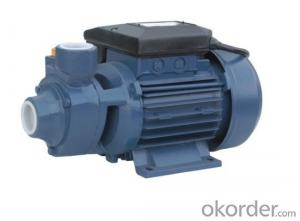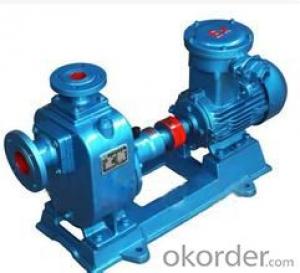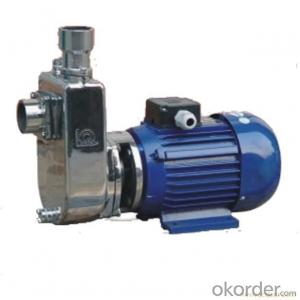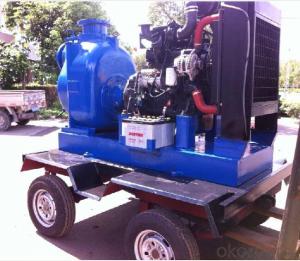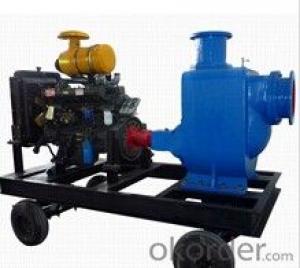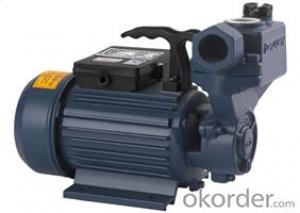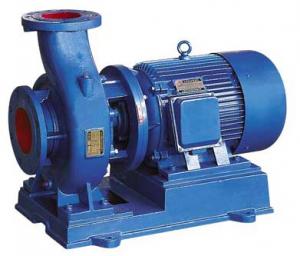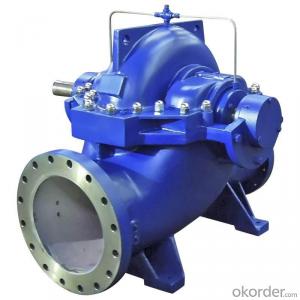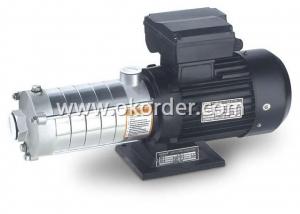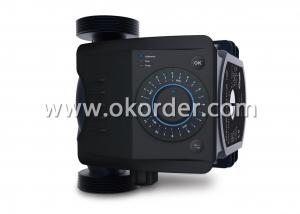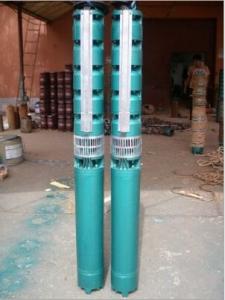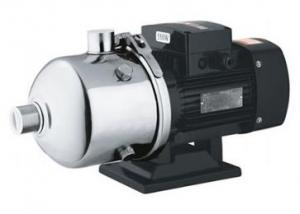Excellent Self Priming Pump with High Quality
- Loading Port:
- Shanghai
- Payment Terms:
- TT OR LC
- Min Order Qty:
- 1 unit
- Supply Capability:
- 100 unit/month
OKorder Service Pledge
OKorder Financial Service
You Might Also Like
Excellent Self Priming Pump with High Quality
Basic Info. of Excellent Self Priming Pump with High Quality
Model NO.:SCP
Pump Casing Combined:Verticaljoint Surface Pump
Impeller:Semi-Open
Working Pressure:Low Pressure Pump
Position of Pump Shaft:Vertical Pump
Usage:Pump
Impeller Number:Single-Stage Pump
Influent Type of Impeller:Single Suction Pump
Mounting Height:Suction Centrifugal
Capacity:15-35m3/H
Head:12.5-18.5m
Power:2.2-5.5kw
Export Markets:Global
Product Description of Excellent Self Priming Pump with High Quality
Inlet diameter: 1.5, 2, 3
Capacity: 15-35m3/h
Head: 12.5-18.5m
Rate of rotation: 2900r/min
3600r/min
Power: 2.2-5.5kw
Power source: Motor, diesel engine or gasoline engine
SCP-type is a local adaptation of self-priming centrifugal pump imported from the American newest product structure. The pump material includes cast iron and stainless steel. They are separately used to transport clear water under 80º C or other liquids similar to clear water, or corrosive liquids.
Application of Excellent Self Priming Pump with High Quality
Widely used in factory, farmland, flower garden, insect killing, foodstuff, construction, fire water, irrigation and drainage, chemical industry, medicine and so on.
Specification of Excellent Self Priming Pump with High Quality
Inlet diameter: 1.5, 2, 3
Capacity: 15-35m3/h
Head: 12.5-18.5m
Rate of rotation: 2900r/min
3600r/min
Power: 2.2-5.5kw
Power source: Motor, diesel engine or gasoline engine
Welcome to inquiry our SCP Self-priming Pump!
FAQ
Q: Are CNBM pumps available in DIY stores?
A: Yes, currently, we’re available for DIY stores all over the world.
Q: Where do I have to send pumps for service?
A: You must send them to the CNBM PUMP Service Point or, after contacting Customer Care, to the CNBM PUMP service center in China.
Q: Are your pumps acid-proofed?
A: To choose the right pumps for chemical applications, we do need further details on hydraulic operations as well as on the type, concentration and temperature of the liquid.
Q: Can your pumps mount Eff.1 motors
A: Currently, only on request though this will shortly be a CNBM standard.
Q: Are your pumps protected against dry running?
A: No, unprotected centrifugal pumps are not generally designed for dry running. It is important to give us or your dealer as much information as possible about the system in which the pump is used. Inlet pressure, the type of liquid to be pumped, together with relative density, viscosity and temperature, for example, are required in order to allow CNBM to recommend the right pump with the right gaskets for a long operating lifetime.
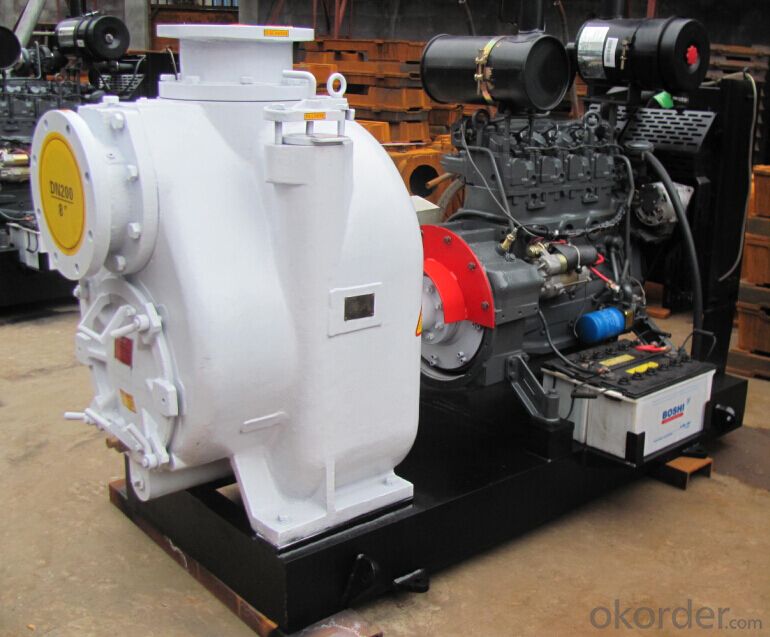
- Q: Our house is situated on very sandy soil. I suspect that my water pump may be getting clogged with sand and silt and other debris. The water flow from the sinks and showers often stops randomly in the middle of the water running only to turn on maybe 30 seconds later. This seems to happen more and more frequently now where as a year ago and beyond it never occurred. Any suggestions?
- I guess you are on a well system. If that is the case then you for sure have a problem with your pump. Good luck.
- Q: I have had this water pump changed 2 times in 5 years is this normal for this car? It has a v6 motor.
- 1. Remove any radiator shroud, or any cowl obstructing the fan, radiator, and water pump. 2. using a pair of large pliers, take off the clamp on the lower radiator hose at the water pump and drain the coolant into a container. Make sure the motor is COLD, room temp, when you do this. 3. Remove the other hose. 4. Remove the cooling fan using an air hammer or a large adjustable wrench. This part is tricky, unless your fan is bolted on with 10 mm bolts, then you lucked out. 5. For step 4, leave the belt on, it will make it easier to remove the fan. 6. If you have a V-8 LT-1, then you have 4 13 mm bolts. Be careful not to damage your distributor which sits under the pump (nice design GM) 7. Using a razor blade, remove any gasket on the inlet and outlet on the block. 8. Apply a thin layer of gasket sealer on the gaskets for the new pump. 9. Install the pump, and its bolts. Use locktite if you have some on the bolts, medium strength. Tighten the bolts to about 90 in/lbs 10. install the pully, and fan. (again, tricky) 11. Install the belt. 12. put lower radiator hose back on (leave off upper) 13. pour 1/2 a bottle of Dex-cool coolant in the radiator 14. fill bottle up with 1/2 water, 1/2 coolant, and pour it into the reservoir. 15. If necessary, get new bottle of coolant, and pour it into the UPPER RADIATOR HOSE, this will help bleed air out of the system. 16. keep filling upper hose, and radiator until it stops bubbling down and basically overflows. 17. install upper hose. 18. make sure the radiator is full and system has no air pockets. Check to see if the upper radiator hose inlet has a bleeder valve. If it does, use a pair of pliers and open it, and watch coolant in radiator drop, then fillit up again. The V-6 has one, not sure about V-8. 19. put radiator cap on, and resevoir cap. 20. run motor, check for any leaks. 21. drive, if vehicle is overheating and there are no leaks, there is still air in the system. Wait till it cools down and bleed air again.
- Q: I Have a 1982 Suzuki DT8 Outboard motor, i rebuilt the water pup, new impeller, wear plate, all that. This is the first time iv run it in a barrel, it wont pump water now. But here is the thing, when i take the inspection cover off(the little round cover that lets you acces the shift linkage), and i run the motor, it will pump water. i noticed that wile i have that cover off all the exhaust comes out that hole and not out the bottom, is the exhaust getting sucked in the pump and stopping it from circulating water?
- i agree with richard. get a hose attachment, a set of earmuffs and run it with them. you wont be able to see water exiting the prop shaft area with the motor in a bucket. hte indicator, where the motor normally pisses to show its pumping water, those sometimes get clogged and need cleared out. it is possilbe for the motor to suck air, or exhuast, instead of water, if a gasket is bad around the impeller. in addition to the gaskets normally changed, there are more gaskets underneath that. usually, those gaskets only go bad if the motor is overheated to the point that the old impeller housing shows signs of excessively high temps. if the old housing was half metled, id go ahead and pull it apart and change the other gaskets too. but the exhuast chooses to exit that port becuase its easier to go out there then through the water. and you see water exit with it, so you know it is pumping water up into the motor. i'll also point out this much. if you are unsure, take it to a proffessional. you can total your motor by operating it without a properly working cooling system. paying a pro to fix it right is much cheaper then a new motor.
- Q: When should I replace my water pump ?
- usually when leaking or noisy
- Q: The submersible, intermittent pump for my household water well, which is undergound out in the yard, “bangs” when it starts and stops, and vibrates the pipes when it runs. Any idea what might be causing this, or how to make it stop doing this? This all started about 5 months ago and has been getting worse.
- It sounds to me like water hammer. There are a few ways to address it, probably the easiest is to add an expansion tank. To find out, try connecting a garden hose somewhere in the system, preferably a cold water pipe. Drain all the water from the hose and put a nozzle or plug on the end so the air can't escape, then turn the valve on. The air in the hose will act as a cushion and, if water hammer is the problem, you won't hear it while the hose is connected. That is not a permanent solution, just a simple test that might give you an answer. Good luck
- Q: One mechanic told me that my Toyota Corolla 2004 CE's water pump is leaking and I need to change pump and its belt costing me around $450. I took it to other mechanic today and he told that water pump looks good and no need to worry. I need to know how I can verify that water pump is leaking or not. Below are some facts of the car that I noticed myself.1. The engine collant level is above half level about at 70% 2. I started my car around 8.30 PM @ 90 degree F after break of 3 hours and the temprature gauge reach to half in 5 minutes.Please advice what can be done to determine the leak is there or not else I have to take it to other mechanic.
- You did not say how many miles your 2004 Corolla CE currently has? We have owned 5 Toyotas from brand new and 211,000 miles is the most mileage we have gotten was on a 1993 Toyota Camry that did require radiator replacement. However, one of the more expensive preventive maintenance expenses requires replacement of Timing Belt every 75,000 to 90,000 miles when it also makes sense to replace Water Pump, Thermostat and both fan belts etc in one overhaul saving on expensive labor and normally being worry free of any breakdowns. If you are not overheating (meaning Temp Gauge runs normal) then I would say 1st Mechanic was just to put wool over your eyes but still one should always watch observe temperature gauge while vehicle is in operation and never run or drive if HOT <= put over to side of road and if recurring then carry gloves/bottle of water and see a good trustworthy mechanic. Hope the Above Info Helps!
- Q: i have a water leak near the water pump in my 1990 cadillac deville i replaced the water pump but it was remanufactured and a pipe on the back of the water pump can it be a heater core or should i buy a brand new one p.s. water leaks after it passes the radiator
- it would,nt be the heater core because it,s a good ways from the water pump. it might be that the water pump gasket slipped when you were putting it on or the by-pass hose is bad or loose. check all the hoses like both radiator hoses and where the heater hoses hook up to the block.
- Q: here is the problem with my water pump control switch settings. the water is being used, runs dry and stays off for sometimes 3 minutes or so.i realize the springs control the cut in and cut out. do i need to make the spring more compressed to make the pump come on sooner? or do i need to make the spring looser to make the switch come on sooner?when i read/hear about adjusting the cut in. the answers seem vague because i do not know the perspecitve of the spring.does compressing the spring make the swith flip easier? or does compressing the spring make the switch harder to flip on?i installed a new 30/50 switch today. My air tank was at 50 or so PSI. but i dropped it to about 30. is the goeal to make the entire full system 50 pounds? because after my pump cycles i get about 70 psi!!!
- with the switch set to operate at 30/50 the tank should have 27 or 28 pounds of air with no water in tank and a faucet open with pump turned off...once this is set the pump will come on at 30 and off at 50 if it goes higher than this the switch is bad or the adjustments have been changed....tightening the tall spring turns both cut in and cut off pressure higher...loosening the tall spring turns both cut in and cut off lower....the short spring sets the difference between the two...tightening the shorth spring raises cut off pressure only...loosening the short spring lowers cut off pressure only....
- Q: a water pump develop for africa
- previously ApproTEC. KVM-Thika, a local manufacturing firm in Kenya. Micro-Irrigation Technologies. Rural Kenyans can no longer rely purely on subsistence farming. ... However, this pump can only pull water from a well ... wanted to pump water up to their fields on the sides of hills. So in October 1998 KickStart introduced the ...
- Q: Hubby is trying to change the water pump on our GMC Jimmy. He cannot get the fan off to access the water pump. What is the trick here? He's trying to do more of the maintenance on our cars to save $$$$ --but it sure is a bear!
- First look at the new water pump, you will notice the threads are either left or right hand threaded. Once you have determined the thread direction, you will know in what direction to remove the fan. Take a large drift punch and place it on the high side of the fastening bolt. strike it with a hammer and the jolt will loosen the grip of the bolt and allow you to remove it. This may take several tries, but it does work, I have used the process numerous times.
Send your message to us
Excellent Self Priming Pump with High Quality
- Loading Port:
- Shanghai
- Payment Terms:
- TT OR LC
- Min Order Qty:
- 1 unit
- Supply Capability:
- 100 unit/month
OKorder Service Pledge
OKorder Financial Service
Similar products
Hot products
Hot Searches
Related keywords
